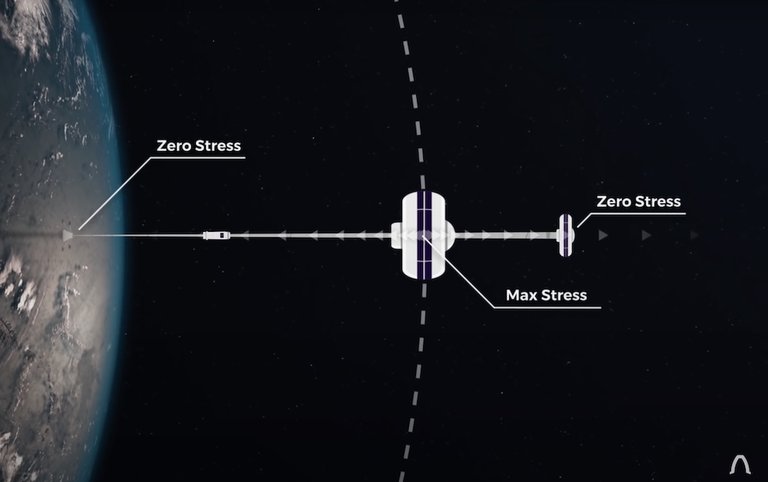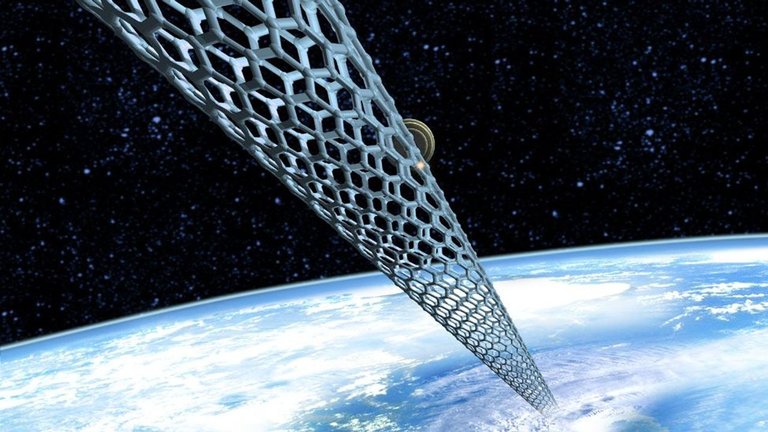
Source
Space elevators are not a novelty, the first mentions of such a device point to a Soviet physicist who at the end of the 19th century already proposed the first ideas, at that time it was truly crazy but technology has advanced a lot and in recent decades the project has already been mentioned again several times.
Los ascensores espaciales no son una novedad, las primeras menciones a tal artilugio apuntan a un físico soviético que a finales del siglo XIX ya propuso las primeras ideas, en aquella época era una auténtica locura pero la tecnología avanza mucho y en en las últimas décadas ya se ha vuelto a mencionar el proyecto varias veces.
The latest attempt has been proposed by the Japanese company Obayashi Corporation, its engineers say they are in a position to create a long cable that would link the Earth with space, to be able to reach orbit for a fraction of the cost of doing it in a rocket and at a speed record in its new version of the space elevator.
El último intento ha sido propuesto por la empresa japonesa Obayashi Corporation, sus ingenieros dicen estar en condiciones de crear un largo cable que uniera la Tierra con el espacio, para poder alcanzar la órbita por una fracción del costo de hacerlo en un cohete y a una velocidad récord, en su nueva versión del ascensor espacial.

Source
The project has a planned cost of one hundred billion dollars and would begin to be developed next year 2025, with a duration of 25 years, which would imply that it could be operational in the year 2050. The operating system does not differ much from those presented previously, a counterweight in space tied to the Earth's surface that would be held in place by the centrifugal force of the Earth.
El proyecto tiene un coste previsto de cien mil millones de dólares y empezaría a desarrollarse el próximo año 2025, con una duración de 25 años lo que implicaría que podría estar operativo en el año 2050. El sistema de funcionamiento no difiere mucho de los presentados anteriormente, un contrapeso en el espacio atado a la superficie terrestre que mantendría en su lugar gracias a la fuerza centrífuga de la Tierra.
According to its developers, the material that will be used to make the cable continues to be carbon nanotubes, one of the ends will be anchored in a land port floating in the sea of the equator, while the other end will be placed in a terminal in a geostationary orbit about 36,000 kilometers above Earth.
Según sus desarrolladores el material que se utilizará para confeccionar el cable siguen siendo los nanotubos de carbono, uno de los extremos se anclará en un puerto terrestre flotando en el mar del ecuador, mientras que el otro extremo se colocará en una terminal en una órbita geoestacionaria a unos 36.000 kilómetros sobre la Tierra.

Source
Modules powered by solar energy would travel along this cable, which would reduce the cost per kilogram of cargo sent to space, and would also offer a more comfortable and accessible means of transportation without having to suffer the accelerations and gravitational forces experienced when we travel in a conventional rocket.
Por este cable viajarían módulos propulsados por energía solar lo que reduciría el coste por kilogramo de carga enviada al espacio, además ofrecería un medio de transporte más cómodo y accesible sin tener que sufrir las aceleraciones y las fuerzas gravitatorias experimentadas cuando viajamos en un cohete convencional.
Personally I think this is a fart taller than your ass, not even Elon Musk with his immense big mouth would be so bold, I'm not very expert but, as far as I know, the carbon nanotubes that we are capable of manufacturing are no more than fifty centimeters in length and we are talking about thousands of kilometers of cable. We'll see how it ends.
Personalmente creo que esto es un pedo más alto que el culo, ni siquiera Elon Musk con su inmensa bocaza sería tan osado, no soy muy experto pero, hasta donde yo sé, los nanotubos de carbono que somos capaces de fabricar no miden más de cincuenta centímetros de longitud y estamos hablando de miles de kilómetros de cable. Veremos como acaba.
More information/Más información
https://economictimes.indiatimes.com/news/international/us/space-elevator-to-be-ready-by-2050-press-a-button-and-you-are-in-space-details-here/articleshow/110805590.cms?from=mdr
Wow brother, another awesome thing I just learned from your great blogs...That sounds like a very very wild idea. This would change space exploration seriously. I'm not sure if it's feasible, though with today's technology. Carbon nanotubes are tiny, and now they're talking about kilometers of them? I can't wait to see that....
If they can make it work it would change the world. I'm a bit of a skeptic too, but I do hope they can do it! It's talked about for the longest time, at least someone is really going to try. They may fail miserably, but at least they are trying!
!BBH
Congratulations @mauromar! You have completed the following achievement on the Hive blockchain And have been rewarded with New badge(s)
Your next target is to reach 2400 posts.
You can view your badges on your board and compare yourself to others in the Ranking
If you no longer want to receive notifications, reply to this comment with the word
STOP